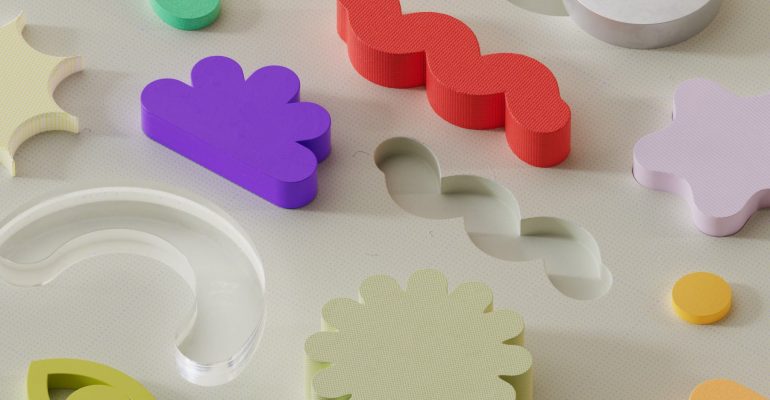The Rise of 3D Food Printing in American Culinary Arts
The Rise of 3D Food Printing in American Culinary Arts: Crafting Gourmet Dishes, Nutritional Supplements, and Personalized Meals
In the heart of America’s bustling kitchens, a culinary renaissance is unfolding. The age-old art of cooking is merging with cutting-edge technology, and at the forefront of this revolution is 3D food printing. This innovation, once confined to tech expos and labs, is now making its mark in professional kitchens, promising a future where food is as much about precision and personalization as it is about flavor and presentation.
Understanding the Craft
3D food printing isn’t just about creating food; it’s about reimagining it. At its essence, this technology meticulously layers ingredients to craft dishes. But it’s more than just aesthetics. This tool offers chefs an unprecedented level of control, allowing them to experiment with textures, flavors, and even the nutritional content of their creations.
Spotlight on U.S. Innovations
– Brill 3D Culinary Studio: This platform has become a favorite among chefs eager to push culinary boundaries. Renowned names like Mei Lin and Jimbo Irvin have used this tech to craft dishes that are as delightful to the palate as they are to the eyes. Mei Lin’s 3D-printed wasabi egg, for instance, showcases the fusion of culinary art and technology.
– Culinary Institute of America’s Initiative: The institute, in collaboration with 3D Systems, introduced its students to the magic of 3D printing with sugar, equipping the next generation of chefs with a skill that promises to be invaluable in modern kitchens.
The Value Proposition
Beyond gourmet dishes, the implications of 3D food printing are vast:
1. Personalized Nutrition: Meals can be tailored to individual dietary needs, ensuring optimal nutrition without compromising on taste.
2. Sustainability: The precision of 3D printing can lead to reduced food waste, aligning with the global push towards more sustainable practices.
3. Culinary Innovation: For chefs, this technology is a canvas, allowing them to experiment with textures and flavors in ways previously unimaginable.
Consumer Engagement and Education
Dining is becoming an experience. Restaurants with 3D food printers often showcase the process, turning dining into an immersive journey. This not only adds a layer of entertainment but also educates diners about the ingredients and the craftsmanship that goes into their meals.
The Broader Implications
The potential of 3D food printing extends beyond the confines of high-end restaurants. As the technology becomes more accessible, we could see it making its way into homes, schools, and even healthcare facilities. Imagine a future where families can design and print their meals, ensuring that each member’s nutritional needs are met. Schools could offer students meals that are not only balanced but also cater to individual dietary restrictions.
In healthcare, 3D food printing could be a game-changer. Patients with specific dietary needs or those who have difficulty swallowing could benefit from meals that are tailored to their requirements and are easy to consume.
Challenges and Considerations
While the potential of 3D food printing is immense, it’s essential to consider the challenges. The initial investment in the technology can be substantial, making it a significant decision for many restaurants and institutions. Moreover, there’s a learning curve associated with mastering the technology and integrating it seamlessly into the culinary workflow.
The Road Ahead
As with any innovation, the journey of 3D food printing is filled with both excitement and uncertainty. However, as more chefs, culinary institutions, and even consumers embrace this technology, it’s clear that 3D food printing is not just a passing trend but a significant step into the future of food.
In conclusion, combining technology and culinary arts is reshaping the American culinary landscape. As we stand on the cusp of this culinary revolution, one thing is certain: the future of food is as exciting as it is delicious. The blend of tradition and technology promises a culinary future that is both innovative and rooted in the age-old love for good food.
Looking for More Resources on ISO 22000?
If you found this article helpful, explore our premium resources designed to help you achieve ISO 22000 certification efficiently:
- 📦 Complete Documentation Package for ISO/IEC 22000 2018: Get all the essential templates and documents you need for fast, easy implementation.
- 🎓 Online Course on ISO/IEC 22000 2018 : Enroll in our comprehensive training to master the key concepts and practical steps toward certification.
- 📋 ISO/IEC 22000 2018 Checklist: Download our detailed checklist to ensure you’ve covered every step of the process.
These resources are tailored to meet your needs and ensure a smooth certification journey. Explore them today and get one step closer to success!

















